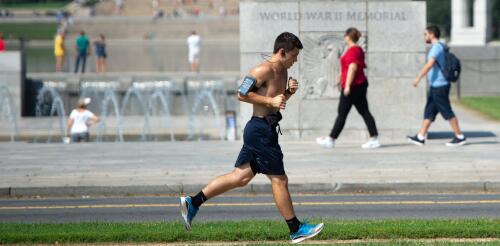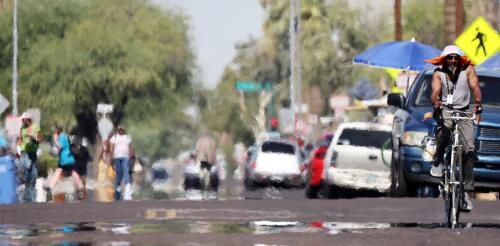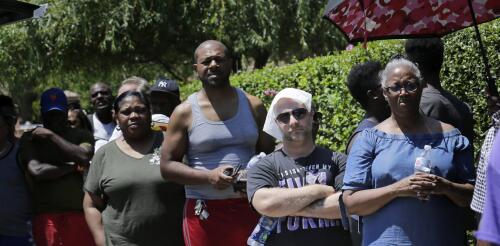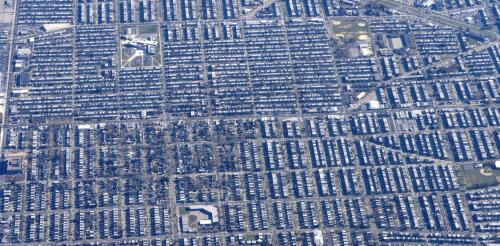Heat
When summer starts with a stifling heat wave, as many places are seeing in 2024, it can pose risks for just about anyone who spends time outside, whether they’re runners, people who walk or cycle to work, outdoor workers or kids playing sports. Susan Yeargin, an expert on heat-related illnesses, explains what everyone should think about before spending time outside in a heat wave and how to keep yourself and vulnerable family members and friends safe. What risks do people facing running, walking or working outside when it’s hot out? The time of day matters if you’re going for a run, or if you’re walking or cycling to work during a heat wave. Early risers or evening runners face less of a risk – the Sun isn’t as hot and the air temperature is lower. But if your normal routine is to go for a run midmorning or over lunch, you probably want to rethink exercising in the heat. Pretty much everywhere in the U.S., the hottest part of the day is be...
You’ve probably heard people say, “It’s not the heat, it’s the humidity.” There’s a lot of truth to that phrase, and it’s important to understand it as summer temperatures rise. Humidity doesn’t just make you feel sticky and uncomfortable – it also creates extra dangerous conditions on hot days. Together, too much heat and humidity can make you sick. And in severe cases, it can cause your body to shut down. Meteorologists talk about the risk of heat and humidity using the heat index, but it can be confusing. I’m a risk communication researcher. Here’s what you need to know about the heat index and some better ways meteorologists can talk about the risks of extreme heat. Outdoor workers can be at high risk of heat illnesses. Robert Gauthier/Los Angeles Times via Getty Images What is the heat index, and how is it measured? Heat index...
Many Americans think of power outages as infrequent inconveniences, but that’s quickly changing. Nationwide, major power outages have increased tenfold since 1980, largely because of an aging electrical grid and damage sustained from severe storms as the planet warms. At the same time, electricity demand is rising as the population grows and an increasing number of people use electricity to cool and heat their homes, cook their meals and power their cars. A growing number of Americans also rely on electricity-powered medical equipment, such as oxygen concentrators to help with breathing, lifts for movement and infusion pumps to deliver medications and fluids to their bodies. For older adults and others with health conditions, a loss of power may be more than an inconvenience. It can be life-threatening. We study environmental health, including the effects of extreme heat and storms on people. In a new study, we analyzed data from New York City and the surrounding area to...
Strong winds spread the largest wildfire in Texas history across more than 1 million acres of rangeland in the Panhandle, the heart of the state’s cattle-producing region, and into Oklahoma in late February 2024. Light precipitation on Feb. 29 helped firefighters as they tried to contain the Smokehouse Creek Fire and other blazes threatening homes and livestock, but the heat and winds picked up again on March 2. At least two people died and scores of structures, including homes, burned. Karen Hickman, a grassland ecologist at Oklahoma State University and president of the Society for Range Management, explained why the fires spread so fast, the risks to livestock and how quickly these ecosystems can recover. How did the fires spread so far so quickly? This region of Texas and Oklahoma is mostly rangeland where cattle graze. A combination of higher-than-average temperatures and low humidity had dried out the dormant plants. When the winds picked up following a couple of ho...
The ways an urban neighborhood is built and the characteristics of the people who live there are both related to how hot it gets. That is the result of our study, published by the Journal of Buildings. If you have ever noticed that some parts of a city feel significantly hotter than others, you have experienced a phenomenon known as the urban heat island effect. This effect is most noticeable at night and when comparing rural and suburban surroundings with urban ones. How we did our work Our interdisciplinary group of researchers studied two Philadelphia census tracts and found a clear link between outdoor temperature and specific urban characteristics. We then asked whether these urban characteristics can be related to the social vulnerability of the residents. Social vulnerability is a concept that goes beyond the residents’ income to include housing conditions and characteristics of the people – such as their age, education, disability and race. Our social vulne...




